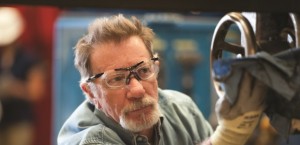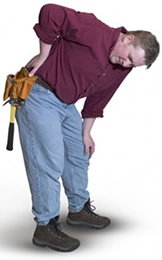 Preventing back injuries is a major workplace safety challenge. According to the Bureau of Labor Statistics, more than one million workers suffer back injuries each year, and back injuries account for one of every five workplace injuries or illnesses. Further, one-fourth of all compensation indemnity claims involve back injuries, costing industry billions of dollars on top of the pain and suffering borne by employees.
Preventing back injuries is a major workplace safety challenge. According to the Bureau of Labor Statistics, more than one million workers suffer back injuries each year, and back injuries account for one of every five workplace injuries or illnesses. Further, one-fourth of all compensation indemnity claims involve back injuries, costing industry billions of dollars on top of the pain and suffering borne by employees.
Category: Safety at Work
Saving Sudden Cardiac Arrest Victims at Work
 There are 220,000 victims of sudden cardiac arrest per year in the United States; about 10,000 sudden cardiac arrests occur at work.
There are 220,000 victims of sudden cardiac arrest per year in the United States; about 10,000 sudden cardiac arrests occur at work.
Waiting for the arrival of emergency medical system personnel results in only 5-7% survival.
Studies with immediate defibrillation have shown up to 60% survival one year after sudden cardiac arrest.
Automated external defibrillators
An automated external defibrillator (AED) is a medical device designed to analyze the heart rhythm and deliver an electric shock to victims of ventricular fibrillation to restore the heart rhythm to normal. Ventricular fibrillation is the uncoordinated heart rhythm most often responsible for sudden cardiac arrest.
Sudden cardiac arrest
Sudden cardiac arrest occurs when ventricular fibrillation takes place or when the heart stops beating altogether. Without medical attention, the victim collapses, loses consciousness, becomes unresponsive, and dies. Many victims have no prior history of heart disease and are stricken without warning.
Causes of sudden cardiac arrest
- Heart attack
- Electrocution
- Asphyxiation (loss of consciousness and death caused by inadequate oxygen in the work environment, such as in a confined space).
Reasons for AEDs in the workplace
- Workers may suffer sudden cardiac arrest while on the job.
- Onsite AEDs save precious treatment time, and can improve survival odds because they can be used before emergency medical service (EMS) personnel arrive.
- A heart rhythm in ventricular fibrillation may only be restored to normal by an electric shock.
- The AED is compact, lightweight, portable, battery operated, safe, and easy to use.
Placement of AEDs
- AEDs should be conveniently installed to ensure response within 3-5 minutes.
- Areas where many people work closely together, such as assembly lines and office buildings.
- Close to a confined space.
- Areas where electric-powered devices are used.
- Outdoor worksites where lightning may occur.
- Health units where workers may seek treatment for heart attack symptoms.
- Company fitness units and cafeterias.
- Remote sites, such as off-shore drilling rigs, construction projects, marine vessels, power transmission lines, and energy pipe lines.
AED program cost
AEDs cost $1200-$3000 per device. Training, annual retraining, and administrative costs are additional.
AED training
Your workers can easily be trained to:
- Recognize sudden cardiac arrest and notify EMS personnel,
- Perform cardiopulmonary resuscitation (CPR),
- Provide early defibrillation with an AED, and
- Care for the victim until EMS personnel arrive.
Accident/Incident Investigation
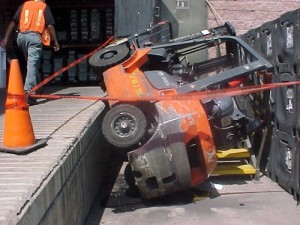 The investigative report should answer six key questions: who, what, when, where, why, and how. Fact should be distinguished from opinion, and both should be presented carefully and clearly. The report should include thorough interviews with everyone with any knowledge of the incident. A good investigation is likely to reveal several contributing factors, and it probably will recommend several preventive actions.
The investigative report should answer six key questions: who, what, when, where, why, and how. Fact should be distinguished from opinion, and both should be presented carefully and clearly. The report should include thorough interviews with everyone with any knowledge of the incident. A good investigation is likely to reveal several contributing factors, and it probably will recommend several preventive actions.
Incident Investigative Should Answer Six Key Questions
 Six key questions should be answered: who, what, when, where, why, and how. Fact should be distinguished from opinion, and both should be presented carefully and clearly. The report should include thorough interviews with everyone with any knowledge of the incident. A good investigation is likely to reveal several contributing factors, and it probably will recommend several preventive actions.
Six key questions should be answered: who, what, when, where, why, and how. Fact should be distinguished from opinion, and both should be presented carefully and clearly. The report should include thorough interviews with everyone with any knowledge of the incident. A good investigation is likely to reveal several contributing factors, and it probably will recommend several preventive actions.
You will want to avoid the trap of laying sole blame on the injured employee. Even if injured workers openly blame themselves for making a mistake or not following prescribed procedures, the accident investigator must not be satisfied that all contributing causes have been identified. The error made by the employee may not be even the most important contributing cause. The employee who has not followed prescribed procedures may have been encouraged directly or indirectly by a supervisor or production quotas to “cut corners.” The prescribed procedures may not be practical, or even safe, in the eyes of the employee(s). Sometimes where elaborate and difficult procedures are required, engineering redesign might be a better answer. In such cases, management errors — not employee error — may be the most important contributing causes.
All supervisors and others who investigate incidents should be held accountable for describing causes carefully and clearly. When reviewing accident investigation reports, the safety department or in-house safety expert should be on the lookout for catch-phrases, for example, “Employee did not plan job properly.” While such a statement may suggest an underlying problem with this worker, it is not conducive to identifying all possible causes, preventions, and controls. Certainly, it is too late to plan a job when the employee is about to do it. Further, it is unlikely that safe work will always result when each employee is expected to plan procedures alone.
Noise and Hearing Loss Prevention
 Occupational hearing loss is one of the most common work-related illnesses in the United States. Approximately 22 million U.S. workers exposed to hazardous noise levels at work, and an additional 9 million exposed to ototoxic chemicals. An estimated $242 million is spent annually on worker’s compensation for hearing loss disability.
Occupational hearing loss is one of the most common work-related illnesses in the United States. Approximately 22 million U.S. workers exposed to hazardous noise levels at work, and an additional 9 million exposed to ototoxic chemicals. An estimated $242 million is spent annually on worker’s compensation for hearing loss disability.
via CDC – Noise and Hearing Loss Prevention – NIOSH Workplace Safety and Health Topi.
Job Hazard Analysis
 Why is job hazard analysis important?
Why is job hazard analysis important?
Many workers are injured and killed at the workplace every day in the United States. Safety and health can add value to your business, your job, and your life. You can help prevent workplace injuries and illnesses by looking at your workplace operations, establishing proper job procedures, and ensuring that all employees are trained properly.
One of the best ways to determine and establish proper work procedures is to conduct a job hazard analysis. A job hazard analysis is one component of the larger commitment of a safety and health management system.
via Job Hazard Analysis.
Emergency Medical Services Workers
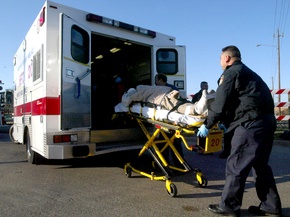 Emergency medical services (EMS) workers are primary providers of pre-hospital emergency medical care and integral components of disaster response. The potentially hazardous job duties of EMS workers include lifting patients and equipment, treating patients with infectious illnesses, handling hazardous chemical and body substances, and participating in the emergency transport of patients in ground and air vehicles. These duties create an inherent risk for EMS worker occupational injuries and illnesses; and research has shown that they have high rates of fatal injuries and nonfatal injuries and illnesses.
Emergency medical services (EMS) workers are primary providers of pre-hospital emergency medical care and integral components of disaster response. The potentially hazardous job duties of EMS workers include lifting patients and equipment, treating patients with infectious illnesses, handling hazardous chemical and body substances, and participating in the emergency transport of patients in ground and air vehicles. These duties create an inherent risk for EMS worker occupational injuries and illnesses; and research has shown that they have high rates of fatal injuries and nonfatal injuries and illnesses.
via CDC – Emergency Medical Services Workers – NIOSH Workplace Safety and Health Topic.
Injury Risk to Home Building Workers
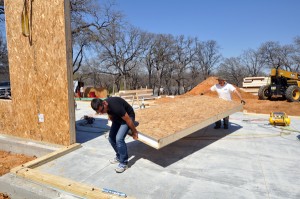 Home building is physically demanding work and manual material handling may be the most difficult part of the job. Manual material handling includes all of the tasks that require you to lift, lower, push, pull, hold or carry materials. These activities increase the risk of painful strains and sprains and more serious soft tissue injuries.
Home building is physically demanding work and manual material handling may be the most difficult part of the job. Manual material handling includes all of the tasks that require you to lift, lower, push, pull, hold or carry materials. These activities increase the risk of painful strains and sprains and more serious soft tissue injuries.
Soft tissues of the body include muscles, tendons, ligaments, discs, cartilage and nerves. Soft tissue injuries cause workers pain, suffering and lost income. They can also restrict non-work activity, like sports and hobbies. Builders’ and employers’ costs include loss of productivity and high workers’ compensation insurance premiums.
via CDC – NIOSH Publications and Products – Simple Solutions for Home Building Workers (2013-111).
Fatal Falls at Work
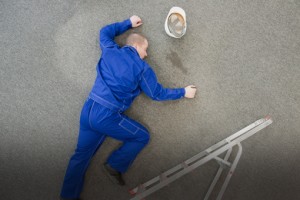 In 2013, falls to lower level accounted for 574 fatal work injuries. Of the cases where height of fall was known (466 cases), 3 out of every 5 were falls of 20 feet or less. Only one in five cases involved falls from more than 30 feet. In fact one in ten cases involved falls of less than 6 feet.
In 2013, falls to lower level accounted for 574 fatal work injuries. Of the cases where height of fall was known (466 cases), 3 out of every 5 were falls of 20 feet or less. Only one in five cases involved falls from more than 30 feet. In fact one in ten cases involved falls of less than 6 feet.
Source: U.S. Bureau of Labor Statistics, U.S. Department of Labor, 2014

